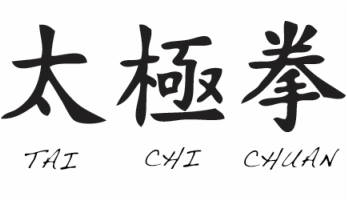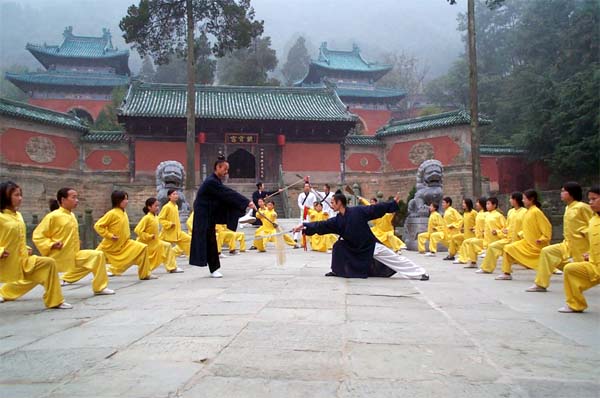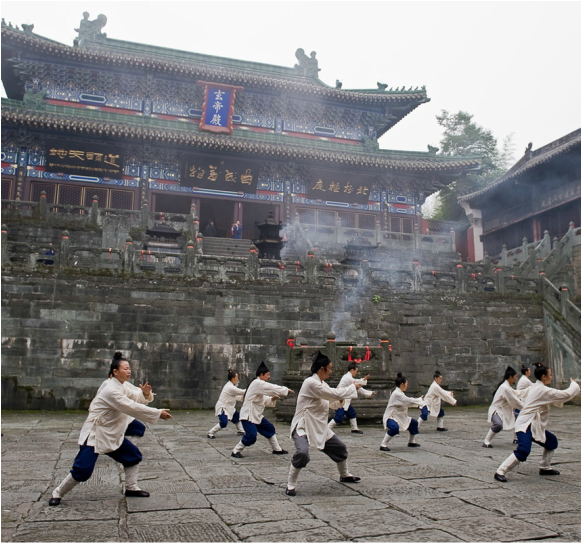

In China, t’ai chi ch’uan is categorized under the Wudang grouping of Chinese martial arts – that is, the arts applied with internal power. Although the Wudang name falsely suggests these arts originated at the so-called Wudang Mountain, it is simply used to distinguish the skills, theories and applications of neijia (“internal arts”) from those of the Shaolin grouping, waijia (“hard” or “external”) martial art styles.

In America, the art of t’ai chi ch’uan is usually shortened to tai chi. There are a number of tai chi styles. Most modern styles of t’ai chi ch’uan trace their development to at least one of the five traditional schools: Chen, Yang, Wu (Hao), Wu, and Sun. T’ai chi ch’uan theory and practice evolved in agreement with many Chinese philosophical principles, including those of Taoism and Confucianism. While t’ai chi ch’uan is typified by some for its slow movements, many t’ai chi styles (including the three most popular – Yang, Wu, and Chen) – have secondary forms with faster pace.
Qigong, qi gong, chi kung, or chi gung (literally: “Life Energy Cultivation”) is a holistic system of coordinated body posture and movement, breathing, and meditation used for health, spirituality, and martial arts training. With roots in Chinese medicine, philosophy, and martial arts, qigong is traditionally viewed as a practice to cultivate and balance qi(chi), translated as “life energy”.
Qigong practice typically involves moving meditation, coordinating slow flowing movement, deep rhythmic breathing, and calm meditative state of mind. Qigong is now practiced throughout China and worldwide for recreation, exercise and relaxation, preventive medicine and self-healing, alternative medicine, meditation and self-cultivation, and training for martial arts.
Research concerning qigong has been conducted for a wide range of medical conditions, including hypertension, pain, and cancer treatment.
To learn more see a great blog on Flowing Zen.com, defining qigong and tai chi.

As health and wellness tools, tai chi chuan and qigong exercise the energy flow, body, and mind, and can be used for improving and maintaining emotional and physical health, and mental acuity. Tai chi chuan and qigong’s meditative aspect contributes to serenity and clarity of mind. The tai chi and qigong offered at Tarbeeva’s studio is particularly gentle and focused on accessibility and long term health benefits.
For article on health benefits of tai chi and qigong, click here.
To read Harvard Medical School’s endorsement of tai chi for health, in particular for later years of life, go here.
Another article on qigong health benefits here.
For the Mayo Clinic’s endorsement of tai chi health benefits, click here.
Tai chi and qigong are gentle forms of movement that benefit people of all ages and levels of health and ability. With regular practice, you will gain inner and outer strength and balance between mind, body, emotion, and spirit. Tai chi and qigong are the perfect adjunct to almost any healing and wellness objective.

Additional information and References:
Harvard Medical School advises tai chi for balance.
A report on tai chi for brain health in elderly from University of Southern Florida.
An article on qigong for health click here.
University of North Carolina School of Medicine recommends tai chi for osteoarthritis, rhematoid arthritis, and fibromyalgia.
An article in Today’s Dietician on tai chi for diabetes.
Article on healing with qigong Click here.
For Tai Chi Research.com, an internet portal for medical studies on tai chi’s efficacy in all sorts of clinical applications, click here.
